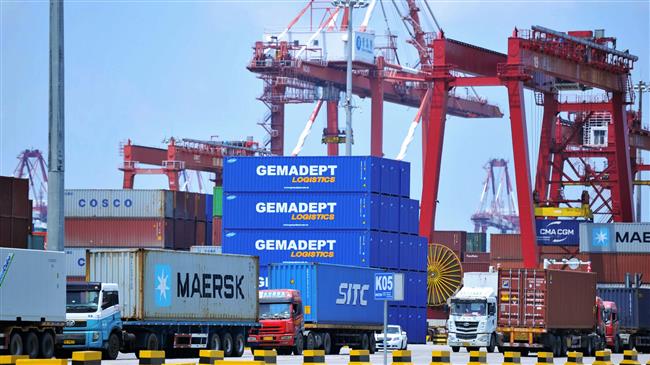US trade deficit with China jumps to $33 billion amid trade war
The US trade deficit with China increased sharply in May, even as America’s trade gap as a whole dropped, underscoring the economic tensions between the world's two biggest economies.
The US Commerce Department said Friday that the May trade deficit -- the difference between what the US exports and what it imports -- fell 6.6 percent to $43.1 billion, the smallest imbalance since October 2016.
Exports climbed 1.9 percent to a record $215.3 billion. Imports were up a smaller 0.4 percent to $258.4 billion.
However, America's deficit in goods with China rose 18.7 percent to $33.2 billion. So far this year the deficit totals $152.2 billion, up 9.9 percent from the same period a year ago.
As has been the case for decades, America's deficit with China is the largest imbalance with any country.
The growth in China’s trade surplus with the US in May topped expectations, possibly as its exporters and big American customers rushed to beat US tariffs.
Last week, the administration of US President Donald Trump imposed penalty tariffs on $34 billion in Chinese products. China retaliated in kind, starting what Beijing called the "biggest trade war in economic history."
During the 2016 US presidential campaign, Trump repeatedly attacked America's trade deficits, contending they were the result of incompetent US negotiators striking bad deals and abusive practices by US trading partners.
He vowed to bring down America's massive deficits if elected and since taking office, he has tried in a number of ways to force China and other US trading partners to alter trade arrangements to boost US exports.
Washington imposed 25 percent duties on $34 billion of imports from China in the first in a possible series of increases that Trump says could affect up to $550 billion of Chinese goods.
China announced that its retaliatory tariffs had also taken effect on $34 billion of US goods that included soybeans, pork and electric vehicles.
Washington has "ignited the biggest trade war in economic history," China's Commerce Ministry said in a printed statement.
The penalty tariffs that the United States imposed on China last Friday are part of Washington’s effort to confront Beijing over tactics the administration says include stealing or pressuring foreign companies to hand over technology.
In addition to the battle with China over technology, the Trump administration has also imposed tariffs on steel and aluminum imports from China and other countries in an effort to protect US producers.
The so-called Made in China 2025 initiative, a strategic plan by Beijing to upgrade Chinese industry, stands at the heart of the trade war between the US and China. The US government believes the plan is a major threat to US technological leadership and economic dominance.
Israeli forces kill 7 more Palestinians in West Bank
Israel’s Netanyahu dismisses military affairs minister Gallant
Hezbollah attacks turn Israel’s Haifa into a ghost town
Iran’s FM meets Pakistani PM, discusses bilateral ties, Israeli atrocities
Iran ramps up gasoline output amid rising demand
UK foreign secretary under pressure over denial of genocide in Gaza
VIDEO | Press TV's news headlines
Hezbollah bombards explosives factory in occupied territories











 This makes it easy to access the Press TV website
This makes it easy to access the Press TV website